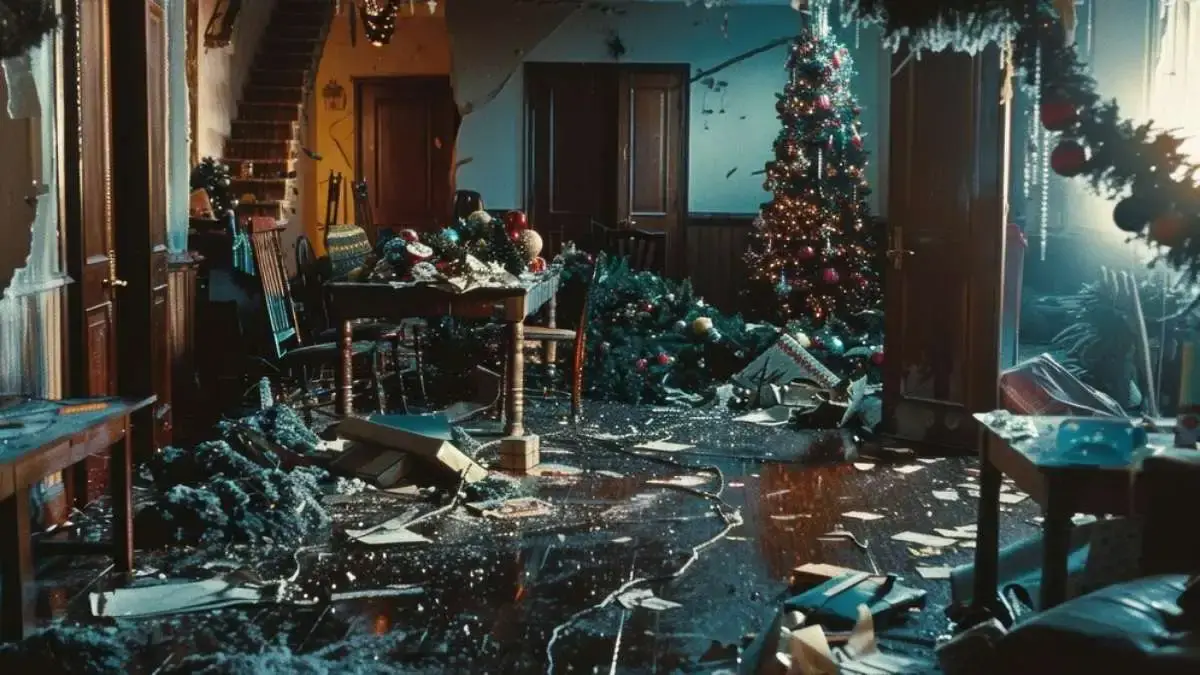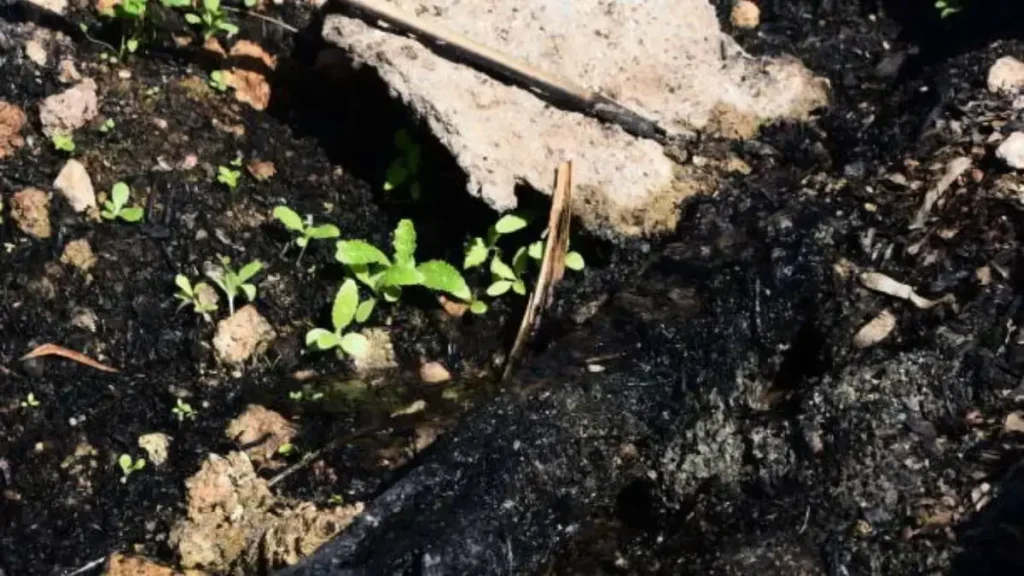HOME IMPROVEMENT
Understanding the Impact of Secondary Damage After Water and Fire Events

When a fire or flood ravages your home, the immediate damage is often the most obvious concern. Burned walls, waterlogged floors, and ruined possessions dominate your attention. However, beneath the surface, another threat lurks—secondary damage. This often-overlooked consequence of water and fire events can cause further destruction if not properly addressed, leading to long-term issues that complicate recovery efforts.
Let’s dive into what secondary damage is, why it happens, and how you can mitigate its effects to protect your home and ensure a smoother recovery.
Table of Contents
Chapter 1: The Silent Spread of Secondary Damage
Secondary damage is the destruction that occurs after the initial incident, often as a result of the environment created by the disaster. Unlike primary damage, which is immediate and visible, secondary damage develops over time and can be far more insidious.
1.1 The Role of Moisture in Water Damage
After a flood or leak, the lingering moisture in your home sets the stage for a range of problems:
- Mold and Mildew: Within just 24-48 hours of water exposure, mold and mildew can begin to grow. These fungi thrive in damp conditions and can spread quickly through walls, ceilings, and floors. Not only do they cause structural damage, but they also pose significant health risks.
- Wood Rot: Wooden structures absorb water, leading to swelling, warping, and eventual rot. This can weaken the integrity of your home’s framework, causing floors to sag and walls to buckle.
- Corrosion: Metal components, such as pipes, nails, and screws, are prone to corrosion when exposed to moisture. Over time, this can lead to leaks, structural weaknesses, and the need for extensive repairs.
1.2 The Lingering Effects of Fire Damage
While fire primarily causes immediate, visible destruction, the aftermath can continue to damage your home long after the flames are extinguished:
- Soot and Smoke Residue: Soot and smoke particles settle on surfaces and permeate porous materials like drywall, carpeting, and upholstery. Over time, these residues can cause discoloration, corrosion, and persistent odors that are difficult to remove.
- Acidic Residue: Fire produces acidic byproducts that can corrode metals, etch glass, and stain surfaces. The longer these residues remain on surfaces, the more damage they cause, leading to costly restoration efforts.
Chapter 2: Detecting Secondary Damage Before It’s Too Late
Catching secondary damage early is crucial to minimizing its impact. However, since it often develops in hidden areas, it can be challenging to detect without knowing what to look for.
2.1 Signs of Moisture-Related Damage
Moisture-related secondary damage often manifests in subtle ways:
- Musty Odors: A persistent musty smell in your home, especially in basements or other damp areas, is a strong indicator of mold growth.
- Peeling Paint or Wallpaper: As moisture seeps into walls, it causes paint and wallpaper to bubble, peel, or crack. These are early signs that water has infiltrated your walls.
- Warped or Discolored Floors: Water-damaged floors may become discolored, swell, or develop soft spots. This is particularly common with wood or laminate flooring.
2.2 Recognizing Fire-Related Residue
Fire-related secondary damage can be harder to spot but no less destructive:
- Persistent Smoke Odor: If you notice a lingering smell of smoke, even after cleaning, it’s likely that smoke particles have penetrated deep into your home’s materials.
- Discoloration of Surfaces: Yellowing or darkening of walls, ceilings, and other surfaces is a sign that soot and smoke residues are present.
- Unexplained Corrosion: Metal fixtures, appliances, or components that begin to rust or corrode may be suffering from exposure to acidic residues left behind after a fire.

Chapter 3: Mitigating the Impact of Secondary Damage
Once you’ve identified secondary damage, swift action is crucial to prevent it from worsening. Here’s how to tackle it effectively:
3.1 Dealing with Moisture After Water Damage
The key to preventing further damage is to eliminate moisture as quickly as possible:
- Dry Out the Area: Use industrial fans, dehumidifiers, and air movers to thoroughly dry out the affected areas. This process should begin as soon as possible after water damage occurs.
- Remove Damaged Materials: Any materials that have absorbed water—such as drywall, insulation, or carpeting—should be removed and replaced. Lingering moisture can lead to mold growth even after the area appears dry.
- Treat for Mold: Apply antimicrobial treatments to prevent mold from taking hold. If mold is already present, hire a professional mold remediation service to safely remove it.
3.2 Cleaning Up After a Fire
Addressing the residue left behind after a fire requires specialized cleaning methods:
- Soot Removal: Use a HEPA vacuum to remove loose soot from surfaces. For more stubborn residues, consider using a dry-cleaning sponge or a chemical cleaner designed for soot removal.
- Neutralize Odors: Smoke odors can be challenging to eliminate. Consider using thermal fogging or ozone treatments, which neutralize odors at the molecular level, to thoroughly deodorize your home.
- Protect Surfaces: Apply protective coatings to surfaces that have been cleaned to prevent further damage from any residual acidic residues.
Chapter 4: The Long-Term Consequences of Neglecting Secondary Damage
Ignoring secondary damage can lead to long-term consequences that not only affect your home but also your health and finances.
4.1 Structural Deterioration
- Compromised Integrity: Wood rot, mold, and corrosion can weaken your home’s structure over time, leading to costly repairs and potentially unsafe living conditions.
- Increased Repair Costs: The longer secondary damage is left unaddressed, the more extensive and expensive the repairs will become. What might have been a simple fix could turn into a major renovation project.
4.2 Health Risks
- Respiratory Issues: Mold spores and smoke particles can cause or exacerbate respiratory problems, particularly in individuals with asthma or allergies. Prolonged exposure to these contaminants can lead to chronic health issues.
- Toxic Exposure: Certain types of mold produce mycotoxins, which can be harmful when inhaled or ingested. Similarly, prolonged exposure to smoke residues can result in the absorption of harmful chemicals.
After water and fire events, secondary damage can exacerbate the initial destruction, making timely intervention crucial. A professional Metro Detroit restoration company can mitigate these effects by addressing hidden issues such as mold growth or structural weakening, ensuring your property is fully restored to its pre-loss condition.
Conclusion: Taking Action Against Secondary Damage
Secondary damage may not be as immediately visible as the primary effects of a flood or fire, but its impact can be just as severe. Understanding the signs, taking proactive steps to mitigate damage, and seeking professional help when necessary are crucial to protecting your home and health in the aftermath of a disaster. By addressing secondary damage promptly, you can prevent further destruction, reduce repair costs, and ensure that your home remains a safe and healthy environment.
-

 GENERAL6 months ago
GENERAL6 months agoChristofle – For Those Who Dream of Family Heirloom Silver
-

 SPORTS8 months ago
SPORTS8 months agoDiscover the World of Football with Streameast: Watch Your Favorite Leagues and Tournaments
-

 GENERAL5 months ago
GENERAL5 months agoUncovering the World of кинокрадко: The Dark Side of Film Piracy
-

 GENERAL2 months ago
GENERAL2 months agoATFBooru: Anime, Gaming, and Subculture Imageboard


























